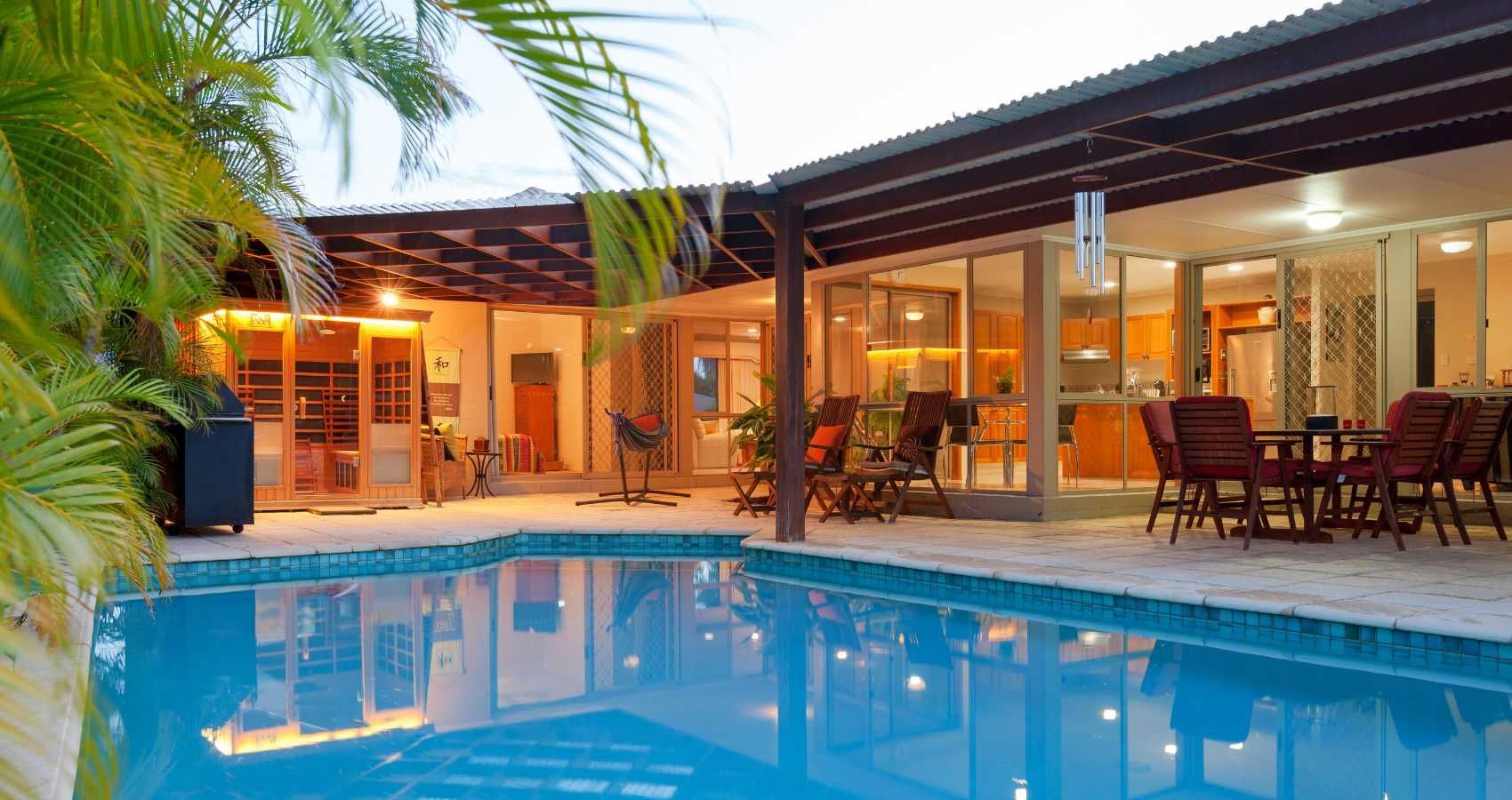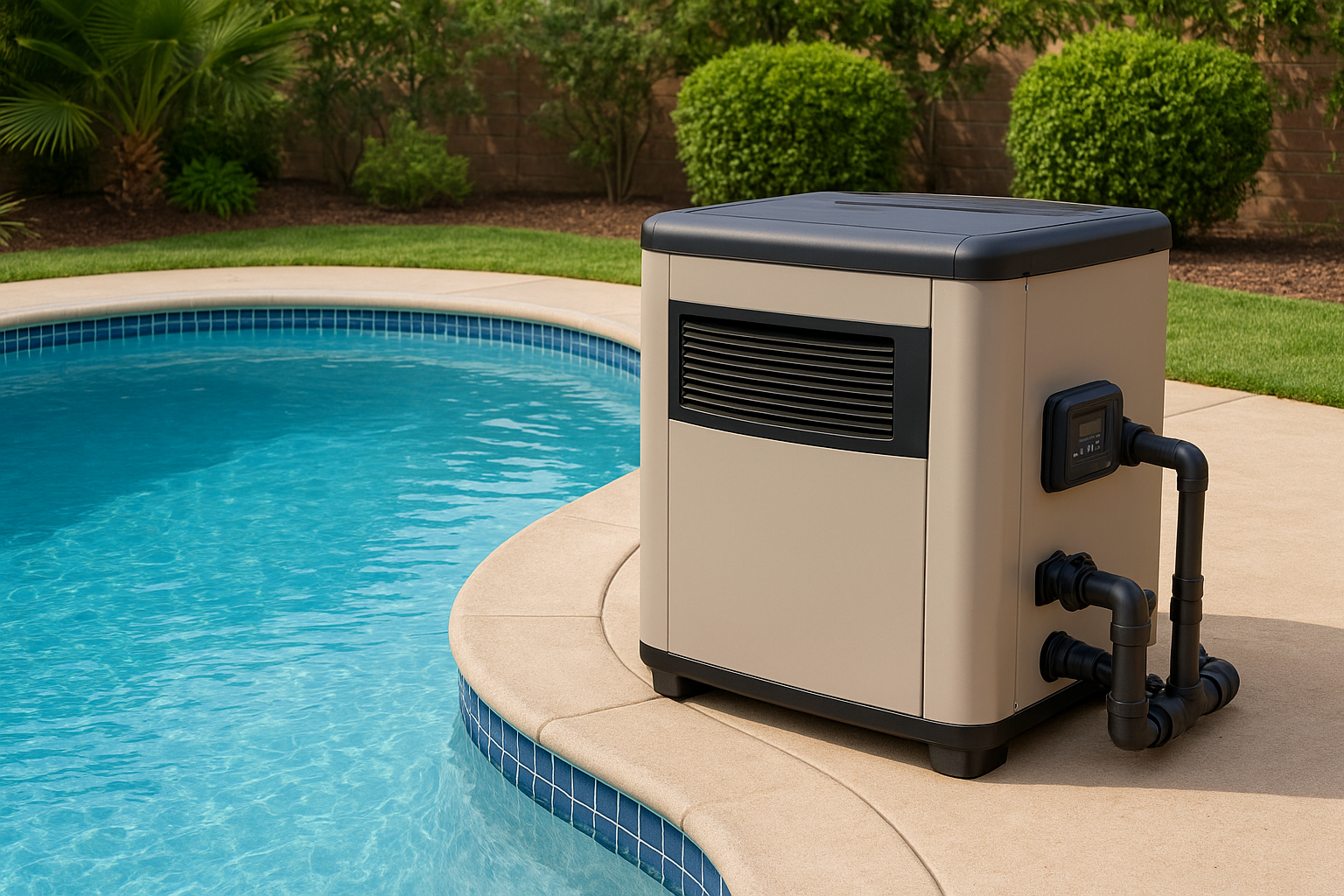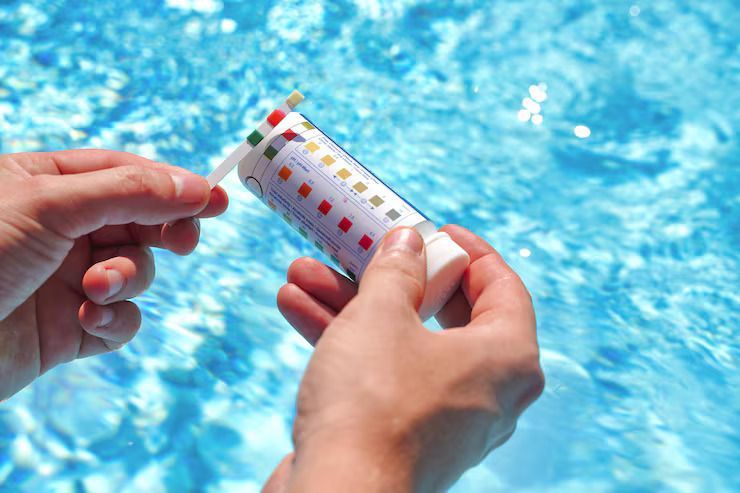How to Lower pH in Pool Without Chemicals
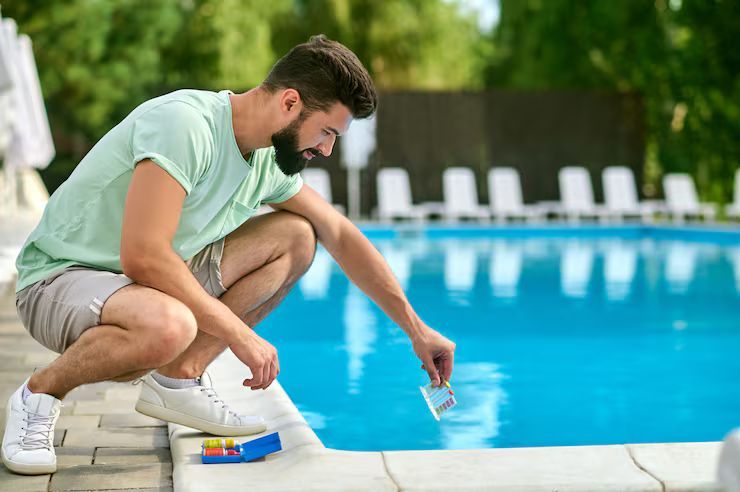
Pool owners want eco-friendly, cost-effective solutions that don’t compromise water quality. Maintaining the right pH balance in your pool doesn’t always require harsh chemicals. In fact, there are several natural and practical ways to bring high pH levels down and keep your water comfortable, clear, and safe for swimmers. From using everyday household items like vinegar and lemon juice to improving aeration and circulation, you can successfully manage your pool’s chemistry without relying heavily on chemical products.
In this guide, we’ll explain how to lower pH in your pool naturally, what lowers pH in a pool over time, and how to keep pH balanced long-term.
Table of Contents
- Key Takeaways
- Understanding Pool pH and Why It Matters
- How to Lower pH in Pool Without Chemicals
- 4 Natural Ways to Lower Your Pool’s pH
- Alternatives to Traditional Chemical pH Decreasers
- Local Considerations for Danbury, CT, Pool Owners
- Frequently Asked Questions | Lowering Pool pH Naturally
- Take Control of Your Pool’s pH Naturally!
- Need Professional Help?
Key Takeaways
✔ The Ideal Pool pH Range Is 7.2–7.8
Keeps chlorine effective, prevents irritation, and protects pool surfaces.
✔
Natural Factors Can Influence pH Levels
Rain, debris, and heavy use all impact pH balance naturally.
✔
You Can Lower Pool pH Without Chemicals
Aeration, adding fresh water, and cleaning debris help stabilize levels.
✔
Household and Eco-Friendly Options Exist
Lemon juice, vinegar, UV systems, and temperature control are safe alternatives.
✔
Consistent Maintenance Prevents Bigger Problems
Regular testing, cleaning, and logging patterns avoid last-minute fixes.
Understanding Pool pH and Why It Matters
What Is the Ideal pH Level for a Pool?
According to the Centers for Disease Control and Prevention (CDC), the ideal pool pH range is 7.2 to 7.8. Anything outside this range can cause problems. Staying within this balance keeps chlorine working at peak efficiency to kill germs while also protecting swimmers from eye irritation, dry skin, and other discomforts.
- High pH (alkaline water) leads to cloudy water, scaling on pool surfaces, and
reduced effectiveness of chlorine.
- Low pH (acidic water) causes eye and skin irritation, corrosion of metal parts, and damage to pool liners.
Keeping water within this range isn’t just about comfort — it’s essential for protecting your investment.
What Lowers pH in a Pool Naturally?
Even without chemical treatment, several factors can cause pH to drop:
- Rainwater: Naturally acidic, especially in regions like Connecticut where seasonal storms are common.
- Organic debris: Leaves, pollen, or algae breaking down release acids into the water.
- Heavy pool use: Sweat, sunscreen, and other contaminants can alter water chemistry.
Understanding these natural influences helps you take advantage of them when adjusting your pool pH without chemicals.
How to Lower pH in Pool Without Chemicals
1. Aeration and Circulation Techniques
One of the simplest ways to help stabilize pool pH is by improving aeration:
- Run fountains, waterfalls, or pool jets to increase oxygen exchange.
- Use an air pump or a bubbler system if your pool has the setup.
Aeration helps release carbon dioxide from the water, which can gradually bring pH levels down while also keeping the water fresher.
2. Will Adding Water to the Pool Lower pH?
This is a common question. The short answer is: sometimes.
- If your tap water is neutral or slightly acidic, adding fresh water can dilute high pH and bring levels closer to normal.
- If your source water is already alkaline (common in some parts of Connecticut), it may not help — and in some cases, it can raise the pH further.
The best approach is to test your source water first before depending on dilution.
3. Preventing Debris & Organic Buildup
Leaves, dirt, and algae can drive your pH up by disrupting natural balance. To prevent this:
- Skim the surface daily.
- Empty skimmer baskets and clean filters regularly.
- Shock the pool naturally (sunlight, aeration) if algae begins to grow.
Keeping the pool clean naturally supports a balanced pH without constant chemical correction
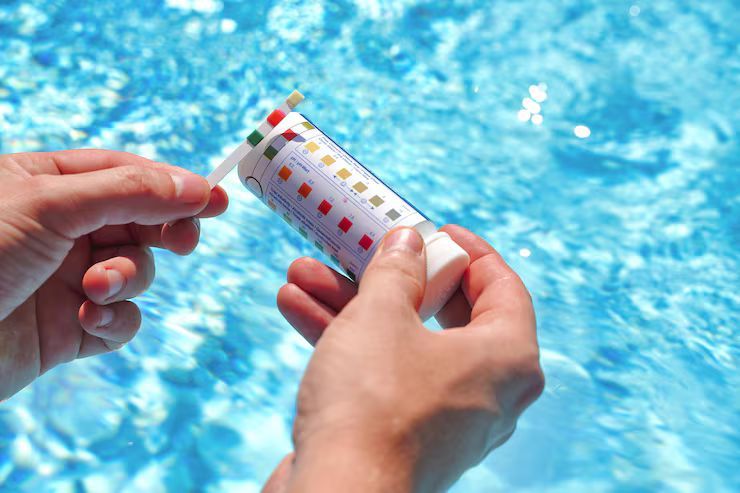
4 Natural Ways to Lower Your Pool’s pH
1. Lemon Juice
Lemons are naturally acidic, with a pH between 2 and 3. Adding lemon juice in small, controlled amounts can help lower high pH levels.
- Pros: Natural, affordable, adds a fresh scent.
- Cons: Large pools would require a lot of lemons, which isn’t practical for regular use.
2. Vinegar
Household vinegar (acetic acid) is another mild natural acid that can lower pool pH.
- Pros: Readily available, safer to handle than stronger acids.
- Cons: You’ll need gallons for a noticeable effect, and it may leave a strong smell temporarily.
3. Raising Pool Temperature
Warmer water encourages carbon dioxide release, which can naturally lower pH over time.
- Methods: Solar covers, pool heaters, or simply allowing sunlight exposure.
- Caution: Warmer pools may encourage algae growth, so cleaning is important.
4. UV Light Systems
UV sanitizers not only kill bacteria and algae but also reduce organic contaminants that cause pH fluctuations.
- Pros: Low maintenance, chemical-free water treatment.
- Cons: Higher upfront cost compared to vinegar or lemon juice.
Together, these natural strategies show you don’t have to depend entirely on chemical pH decreasers for pools.
Alternatives to Traditional Chemical pH Decreasers
Mechanical or Device-Based Options
For pool owners who want a more advanced system without pouring in acids, CO₂ injection systems are a great alternative. These release small amounts of carbon dioxide into the water, which forms carbonic acid and safely lowers pH.
Preventive Maintenance Practices to Keep pH Balanced in the Pool
- Test your pool water 2–3 times per week with strips or digital meters.
- Keep circulation strong: run your pump daily to avoid “dead spots.”
- Cover your pool when not in use to prevent debris and limit rainwater effects.
- A proactive approach reduces the need for last-minute pH fixes.
Local Considerations for Danbury, CT, Pool Owners
Pool chemistry isn’t one-size-fits-all. Local conditions matter:
- Well water in Connecticut often has higher alkalinity, making pH harder to lower.
- Seasonal rainfall brings acidic water, which can temporarily balance high pH but also introduces debris.
- Cold winters mean pools are closed for months, requiring careful balancing during opening season.
At FJV Construction, we help Danbury homeowners navigate these local challenges so their pools stay safe and enjoyable all season long.
Frequently Asked Questions (FAQs) | Lowering Pool pH Naturally
What household item lowers pH in pool?
Common household items like vinegar (acetic acid) and lemon juice (citric acid) can help lower pH in your pool. While they’re safe and natural, keep in mind that large pools require significant amounts for noticeable results, so these work best for small adjustments or testing.
What brings pH down naturally?
Several natural factors can bring pH down:
- Rainwater, which is slightly acidic.
- Organic debris breaking down in the water.
- Natural acids like lemon juice or vinegar.
- Aeration and higher water temperatures, which encourage carbon dioxide release and lower pH gradually.
How to lower the pH level in a pool quickly?
To lower pH quickly without harsh chemicals, you can:
- Add vinegar or lemon juice in controlled amounts.
- Use a UV light system to reduce organic matter.
- Increase aeration with jets or fountains to speed up CO₂ release. For larger or urgent corrections, a professional-grade pH decreaser is faster and more reliable.
What is a substitute for a pH decreaser?
Instead of chemical pH decreasers, you can use:
- Vinegar (acetic acid)
- Lemon juice (citric acid)
- CO₂ injection systems (mechanical, not chemical). These options naturally adjust the pool’s chemistry, though they may take longer and require careful monitoring.
Does baking soda lower pH in pools?
No. Baking soda actually raises alkalinity and often increases pH rather than lowering it. If your pool’s pH is too high, baking soda is not the right solution — use natural acids like vinegar or lemon juice instead.
What’s the Safest Long-Term Strategy?
A mix of regular monitoring, natural balancing methods, and occasional professional help works best. Overcorrecting with acids can be as harmful as doing nothing at all.

Take Control of Your Pool’s pH Naturally!
You don’t need to rely exclusively on chemicals to keep your pool healthy. With methods like aeration, natural acids (lemon juice, vinegar), temperature control, and UV systems, you can keep pH in check the natural way.
Your 4-Step Action Plan for This Week
- Test Your Pool Water Today. Use strips or a digital tester to check where your pH levels stand.
- Adjust if Needed. If the reading is high, start with aeration or a small vinegar adjustment before considering stronger measures.
- Keep It Clean. Skim leaves and debris daily, and clean filters to stop organic buildup from disrupting your pH
- Track and Learn. Maintain a simple log of test results and note factors like rain, water top-offs, or heavy swim days. Over time, you’ll spot patterns that make balancing easier.
Need Professional Help?
If you’d like expert guidance in fine-tuning your pool’s chemistry, our team at FJV Construction in Danbury, CT, is here to help. From pool construction to maintenance solutions, we’ll make sure your water stays crystal clear and perfectly balanced all season long.

